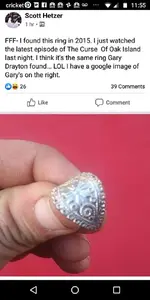Read my post and you will know why---Oak Island.
Their ship of treasure was cast into the middle of Oak Island most likely where the Swamp is today. They tried for five weeks with over 200 Knights Templar and over 100 crew to get the ship to the South Shore and failed.
They buried the treasure in two locations...
These treasures were the treasures of the Katherine ship wrecked on Oak Island and the Ortus which sank in the bay south of the Swamp.
This was in 1398. Sir Henry Sinclair's ship was the Katherine and on his previous trip in 1395 his ship was the Ortus which sank in Mahone Bay in 1398.
I will explain no more if you ask any more questions. This is my final answer to you.
All of this is from Diana Jean Muir's 'found" Sinclair Journals, which she stated were copies of copies with NO actual provenance of being real journals written by Earl Henry Sinclair.
There exists NO outside collaborating document or record contemporary with Earl Henry Sinclair that mentions these voyages, or his being gone from Orkney or Scotland for any amount of time, neglecting vassal obligation duties required by his Oath of Fealty taken when he became the Earl of Orkney.
Bishop Thomas of Orkney, a contemporary of Earl Henry, states Sinclair was defending at the Scottish/English border in 1398, honoring his Oath of Fealty obligations, not on a voyage to Oak Island.
Earl Henry's grandson compiled the SINCLAIR DIPLOMA genealogy, and there is NO mention of any great voyages to the New World by Earl Henry or any previous Sinclair, or Templars or treasure.
this very first mention of these "voyages", as you know, was 450 years after Henry's death when Richard Henry Major deceptively translated the fictional Zeno narrative adventure , changing "Prince Zichmni" to "Prince Sinclair" in 1875.
It has been established by legitimate professional historians that Henry Sinclair was never a prince or referred to as a prince during his lifetime, nor was he a Templar or known associate of Templars, nor was he a Freemason.
When there exists NO outside collaborating evidence to serve as supporting proof, as with Muir's "discovered" Sinclair Journals, then it is considered as, legend, lore, or a tall tale, NOT as recorded actual history, and until outside collaboration can be cross referenced and verified by the professional community, Muir's Sinclair Journals will be considered as legend, lore, and tall tales and NOT real history.





